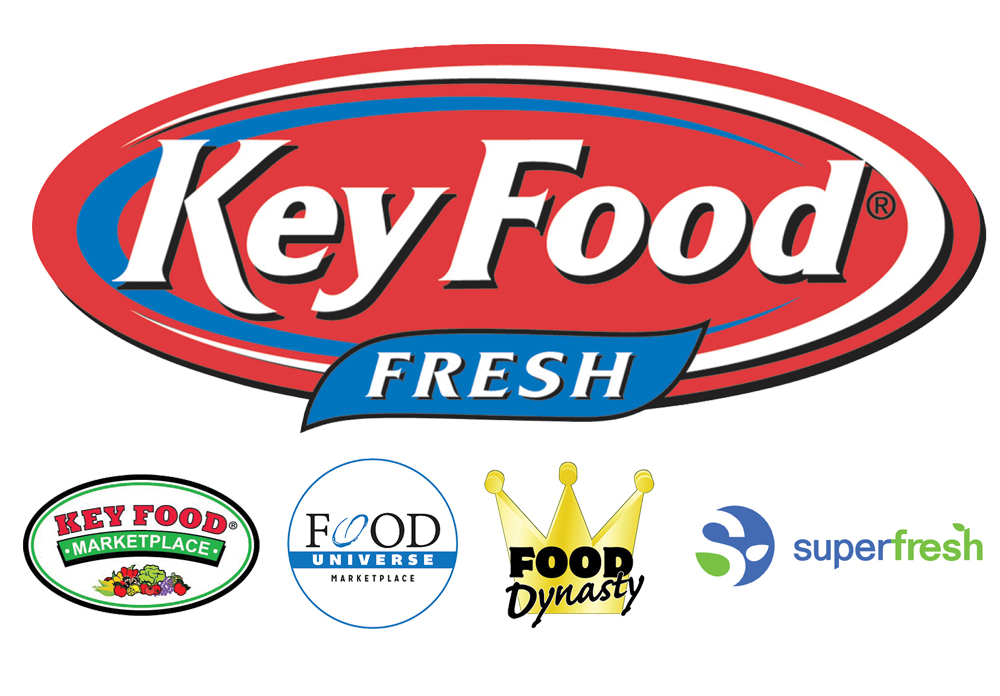More than 800 suppliers, brokers and distributors (a record) attended the annual Key Food Stores Co-Operative, Inc. vendor summit – “Changing the Game” – held late last month at the Hilton Garden Inn in Staten Island, NY. There was standing room only as CEO Dean Janeway, COO George Knobloch, and integrated marketing and PR manager Michele Gissi addressed the engaged audience. “Changing the Game” seemed like quite the fitting theme for this charismatic and confident team.
Coming off a record performance last year (fiscal ’16), this Staten Island-based co-operative shared with a packed and enthusiastic house that 2017 is shaping up as an even better 12 months (Key’s fiscal year ends in April). In providing an overview of the supermarket co-op, which next year will celebrate its impressive and exciting 80th anniversary, Knobloch stated that Key Food’s network continues to expand, and now includes 240 stores in the Tri-State area (238 units owned by 117 members and two new corporate units which were opened this year).
Annual retail sales have reached $2.6 billion and Key is the leading supermarket merchant in the five boroughs of New York City with a 12 percent market share. To put it in perspective, when Janeway became CEO of the organization in 2008, Key Food’s members operated 102 stores – he projects that its members
will operate 250 by 2018. “By all measurements, we are the fastest growing retail group in Metro New York,” Knobloch declared.
CEO Dean Janeway broke down the details of Key’s successful growth over the past 30 months, noting that $800 million in incremental sales have been gained from two primary sources: 46 new stores gained
from rival Associated Stores Group (many of them were customers of the bankrupt White Rose which ASG acquired in 2014) and 34 stores acquired from A&P after that big chain closed up shop a year ago.
According to Janeway, Key Food was one of the winners in the derby to acquire A&P stores, gaining 11 percent of the 297 stores put up for auction. He told the audience that of those 297 units, 182 have reopened as supermarkets, five stores were acquired by non-food retailers and landlords retained the remaining 110 stores. Janeway said that approximately 39 percent of A&P’s $5.3 billion in annual sales was reabsorbed by existing operators in the market.
In assessing Key Food’s strategy to aggressively seek expansion both through acquisition and organic growth, the candid and energized Janeway saw no other strategic path. “One of our competitors said they wanted smart intelligent growth. I feel that’s absolutely ridiculous. When these opportunities present themselves you have to take as much as you can, when you can. You stretch your organization to the max and you sort it out later. That’s what we’ve done. And we’ve done a good job capitalizing on this,” he affirmed to the crowd’s applause.
Janeway also revealed that Key Food had recently signed a new five-year agreement with its primary supplier, C&S Wholesale Grocers, adding that he had many concerns about re-upping with C&S, but was not confident that the other suppliers Key negotiated with could provide the necessary warehouse space needed, especially when accounting for his company’s expected growth in the next five years. We’ve had serious service issues with them, but they do provide us with a low cost of goods.”
One of the central themes of the meeting was the dominance of Key Food and of the independent retailer as a whole in the five boroughs – Manhattan, Brooklyn, Queens, the Bronx and Staten Island. Janeway said
Key’s research indicates that mass merchants control 3 percent of the $17.3 billion food and drug market. Club stores garner a 9 percent chare and drug and convenience outlets capture 25 percent of available dollars. The other 63 percent, according to the 47-year-old CEO, belongs to supermarkets, with 52 percent of all five borough sales controlled by independent operators. According to Food Trade News, Key Food is
the market leader among independents with 12 percent of the biggest market in the country.
As he revealed last year, Janeway believes that a key component of Key’s success has been to “collapse” the market that surrounds the co-op’s retailers. He noted that the exit of A&P was certainly a game changer, adding that challenging times affecting Fairway Market and D’Agostino’s and the sales decline at Associated have also impacted the configuration of the New York market.
In reviewing Key Food’s growth plan, Janeway said another priority would be to “explode” New Jersey (where the company’s members operate 23 stores including five former A&P units which have opened in the past 12 months). He also updated the group on Key Food’s two new corporate stores that were formerly A&P-owned units.
“We opened these two stores as a learning lab,” Janeway explained. “It covers several interests including serving as a testing ground for best practices and creating an infrastructure to secure our loan portfolio.”
He acknowledged that the test has been an initial challenge, dealing with the hands-on responsibilities of operating stores. “The truth is that the experience has been a bit humbling thus far, but if it allows us to better understand our customers and also provides a platform for our members to learn from then it, then it will prove to be a good thing.”
During the next three years Janeway is projecting that annual sales will increase from $2.7 billion (April 2017) to $3 billion and store count will jump from 250 to 300.
Article by: Food Trade News

